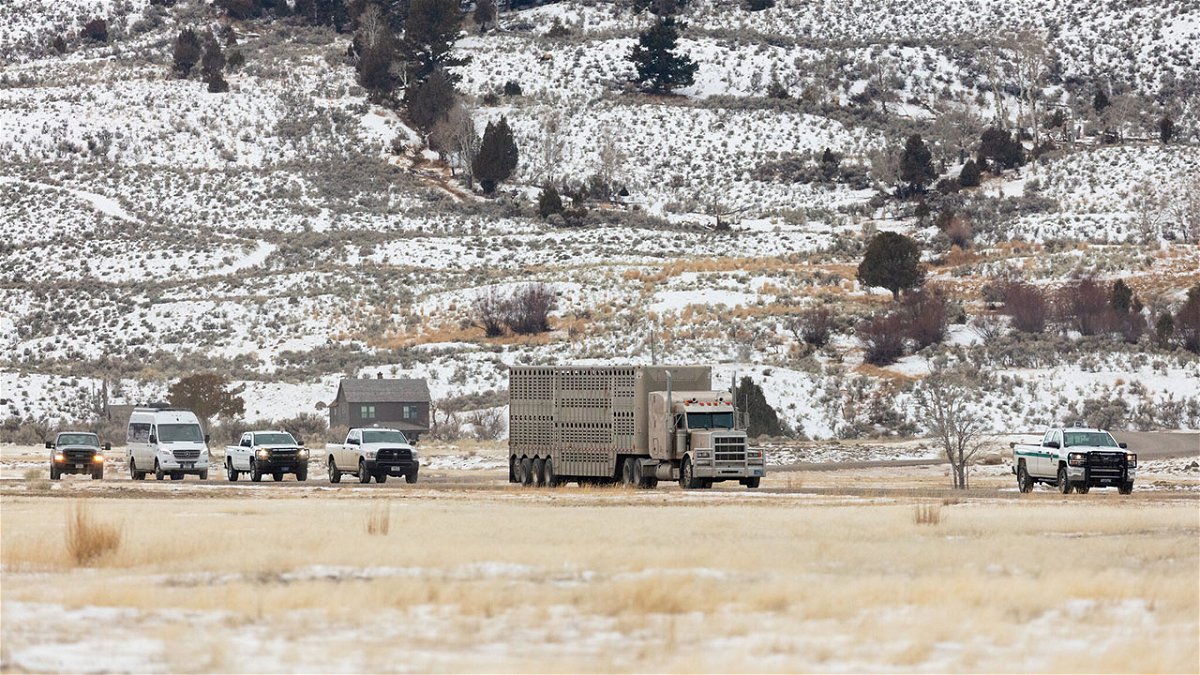28 bison transferred from Yellowstone to Fort Peck Tribe

MAMMOTH HOT SPRINGS, Wyo. (KIFI) - On Wednesday, the Assiniboine and Sioux Tribes of Fort Peck Indian Reservation completed the transfer of 28 Yellowstone bison to the Fort Peck Indian Reservation in Poplar, Montana, under the Bison Conservation Transfer Program.
All the bison completed Phases I & II of the brucellosis quarantine protocol at Yellowstone National Park and the Animal and Plant Health Inspection Service (APHIS) facilities and will finish assurance testing (Phase III) at Fort Peck (see information below for details about the protocol).
The National Park Service (NPS), APHIS, State of Montana, and Fort Peck Assiniboine and Sioux Tribes started the Bison Conservation Transfer Program to identify brucellosis-free bison and transfer them to new areas as an alternative to sending them to slaughter. The program has led to the largest transfer of live Yellowstone bison among Native American Tribes in history. Since 2019, 182 bison have gone to the Assiniboine and Sioux Tribes of the Fort Peck Indian Reservation. Of those, 82 animals were transferred to the InterTribal Buffalo Council who distributed them to 18 Tribes in 10 states.
The bison transferred this week were captured at Stephens Creek in the northwest corner of Yellowstone National Park in March 2020. Twenty males completed quarantine in the park and a small family group of eight (1 male, 4 females, 3 calves) completed quarantine in the nearby APHIS-leased facility at Corwin Springs. Currently, 67 animals are still in the Bison Conservation Transfer Program and the park and APHIS intend to enter 80-120 new animals into the program this winter. This transfer is the result of many partners working together: Yellowstone National Park, the Assiniboine and Sioux Tribes of the Fort Peck Indian Reservation, APHIS, Montana Department of Livestock (DOL), the State of Montana, InterTribal Buffalo Council, Yellowstone Forever, Defenders of Wildlife and the Greater Yellowstone Coalition.
To expand the program, Yellowstone has partnered with Yellowstone Forever and the Greater Yellowstone Coalition to increase the capacity of the facility within the park from holding 80 animals to 200 animals. Improvements will be completed this winter. These improvements and continued coordination with APHIS will result in transferring about 100 animals a year to Tribal Nations as an alternative to slaughter.
Background information about quarantine
Quarantine was identified as a possible tactic for bison management back in 2001 when the Interagency Bison Management Plan (IBMP) was signed by the Secretaries of Interior and Agriculture and the Governor of Montana. The National Park Service formally pursued a quarantine program in 2014 by initiating a public planning process. The operational quarantine program was approved in May 2018. APHIS and DOL established the final structural specifications and biosecurity requirements for quarantine facilities in June 2017. The only facilities that currently meet those specifications are located at Stephens Creek in Yellowstone National Park, Corwin Springs in Montana, and the Fort Peck Reservation. APHIS developed the quarantine protocols in October 2003 and validated them during 2005-2010. Quarantine has three phases:
- Phase I - Managers capture bison in or near the park during winter. Bison considered suitable for quarantine based on initial negative tests for brucellosis are isolated in double-fenced quarantine pastures and tested every 30-45 days until all bison test negative for two consecutive testing periods.
- Phase II - Bison in these individual test groups undergo brucellosis testing by age and sex requirements described in the 2003 Brucellosis Eradication: Uniform Methods and Rules (APHIS 91–45–013) and are certified as brucellosis-free.
- Phase III - Managers can transfer bison to other fenced pastures. In the new location, brucellosis tests are conducted at six and 12 months to provide additional assurance. Managers keep these bison separate from other animals at least until the six-month test is completed. Thereafter, managers can release these bison on public or tribal lands for conservation and cultural purposes.






